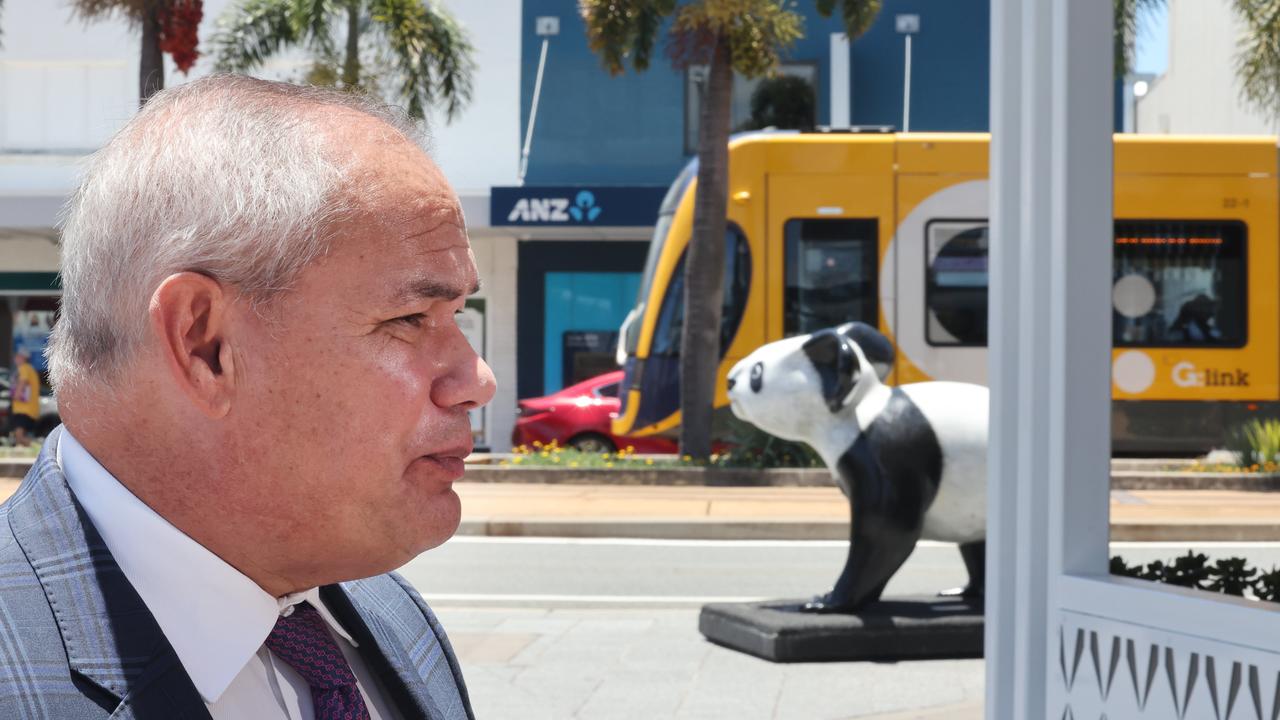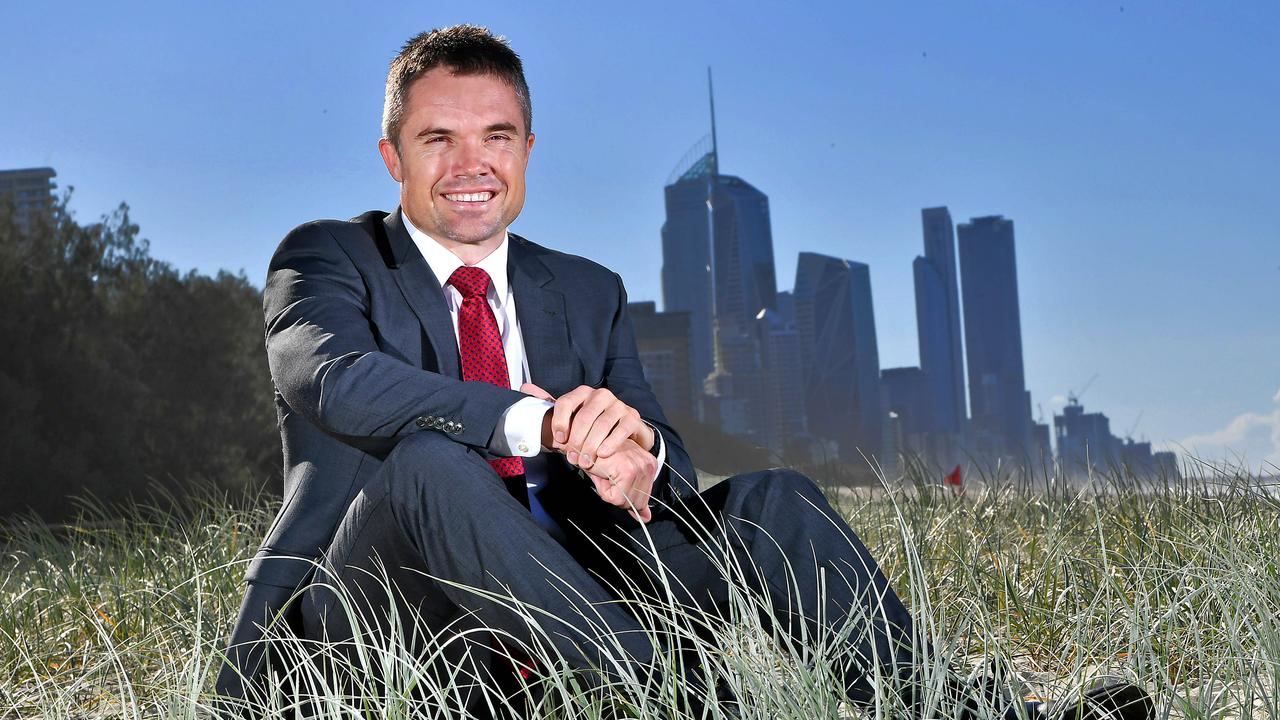Griffith University gets extra $2m for BioSpine study into spinal cord injuries
The State Government has tipped in an extra $2 million for Griffith University researchers for a new study using mind reading technology.
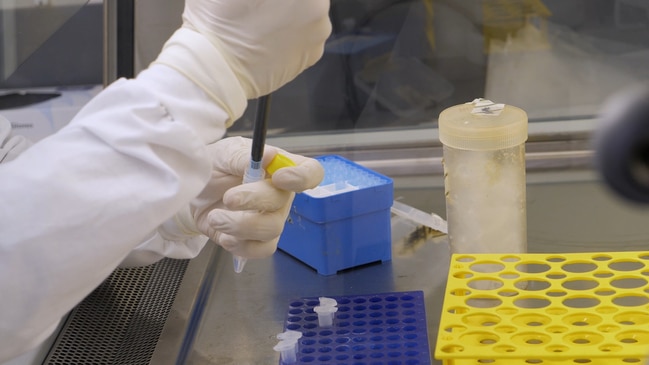
Gold Coast
Don't miss out on the headlines from Gold Coast. Followed categories will be added to My News.
THE State Government has tipped in an extra $2 million for Griffith University researchers to develop technology to help people with spinal cord injuries walk again.
The funding boost announced yesterday will ensure a team in the university’s BioSpine program to create a commercially available product in six to eight years.
The BioSpine team will combine technological aids, thought control, electrical stimulation and drug therapy with the ultimate aim of restoring lower limb function.
For BioSpine research team co-leader Dr Dinesh Palipana the study is more than an academic pursuit. It is personal.
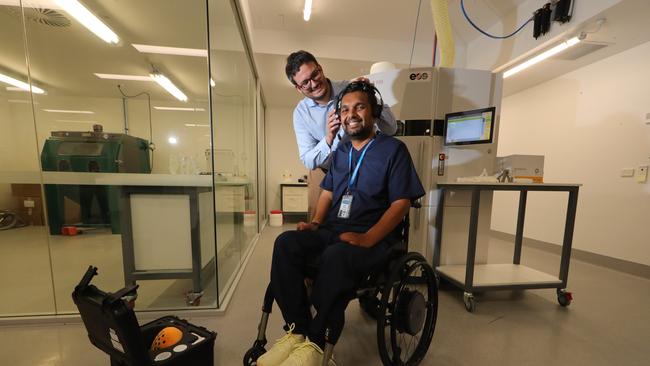
In 2010, Dr Palipana was involved in a road crash that left him a quadriplegic.
“Walking is the ultimate goal,” Dr Palipana told the Bulletin.
“The science is exciting, the technology is exciting but at the centre of this work is people.
People that are paralysed and urgently need medical change.”
Likened to Marvel’s Tony Stark, Dr Palipana has been piloting some of the technology himself in the Southport laboratory alongside BioSpine co-leader Dr Claudio Pizzolato, a Research Fellow at Griffith University.
GET FULL DIGITAL ACCESS: $5 PER MONTH FOR THE FIRST 3 MONTHS
“The technology is in a Model T Ford stage, so the science is getting better an better,” Dr Palipana said.
At present the technology consists of a headset and electronic bike and walking machine, which will be eventually refined by industrial designers for commercial production.
“There is evidence from leading centres around the world that using thought control, electrical simulation and drug therapy in an attempt to restore function in paralysis is showing success – and we are excited to take this journey and bring these approaches together for the first time,” Dr Palipana said.
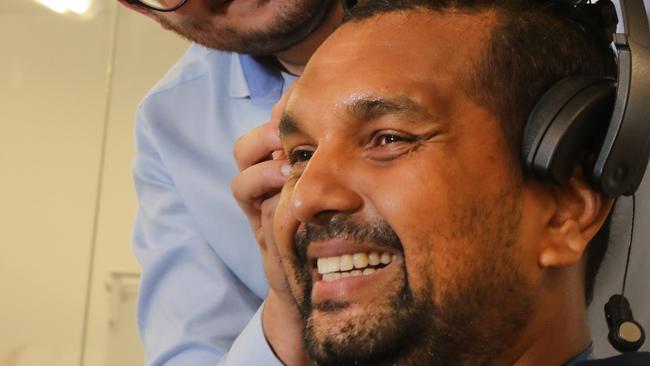
“Griffith University helped me with the challenging task of becoming a doctor with quadriplegia. Now we look at changing things for so many people living with paralysis. That is not a small goal, but a real one.”
OTHER NEWS
Suspected murder victim found in sleeping bag
Bizarre reason why man was allegedly stabbed
‘You should just let me, you know that is what I want’
With a combined team of up to 15 researchers and access to an international network of more than 90 collaborators, the flagship program will also develop next-generation intelligent approaches to training, treatment, surgery planning and rehabilitation, addressing neuromusculoskeletal (neurological and orthopaedic) and vascular (cardio and neuro vascular) conditions.
The Queensland Government funding is provided through the Motor Accident Insurance Commission (MAIC), which regulates the state’s Compulsory Third Party (CTP) insurance scheme.

